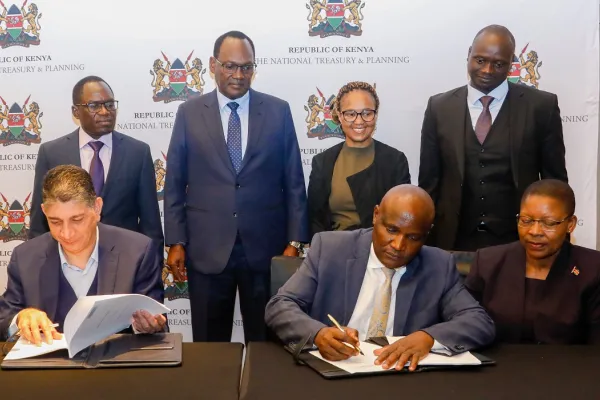Ruto sets up State Department of environment and climate change
Ruto sets up State Department of environment and climate change
President William Ruto has created a State Department for Environment and Climate Change underlining Kenya's commitment to protecting the country from the adverse effects of global warming.
Why it matters: Kenya, which is East Africa's largest economy, is largely dependent on tourism and rainfed agriculture for both crops and livestock, sectors that are highly susceptible to climate change and extreme weather conditions.
Rising heat levels and the ongoing worst drought in a half-century have contributed to severe crop and livestock losses, leading to famine for over 4 million citizens across 23 counties, displacement of populations, and other extreme weather-related curveballs that threaten the population's health and wellbeing.
In Executive Order One of 2023, Dr Ruto established the Office of the Council of Climate Change Advisor, one of the 13 key offices in the Office of the President.
The functions of the State Department for environment and climate change shall include:
- National Environment Policy and Management
- Climate Change/Action Policy
- Promotion of low-carbon technologies to reduce emissions
- Restoration and Protection of Strategic Water Towers
- Protection and Conservation of the Natural Environment
- Pollution Control
- Lake Victoria Environmental Management Programme
- Restoration of Lake Naivasha Basin
- Meteorological Services
- Conservation and Protection of Wetlands.
Meanwhile, latest data from the National Drought Management Authority (NDMA) show that nearly 950,000 children below the age of five require treatment for acute malnutrition, a sharp increase from 884,464 reported in August last year.
Read also: Appeal for funds intensify to fight Kenya’s worst drought in a half-century
Further, an estimated 134,000 pregnant and lactating women now require treatment for malnutrition compared to 115,725 women reported in August.
Climate change due to global warming is steadily changing rainfall patterns in Kenya. The October - December short rains in Kenya's ASALs barely reversed the current drought situation.
Only the county of Laikipia slightly improved to Alert phase leaving 13 counties namely; Taita Taveta, Isiolo, Kilifi, Kwale, Samburu, Turkana, Wajir, Kitui, Kajiado, Mandera, Garissa, Tana River and Marsabit are in alarm drought phase.
The long rains this year are also expected to be poorly distributed across the country further worsening the food security situation in Kenya.



